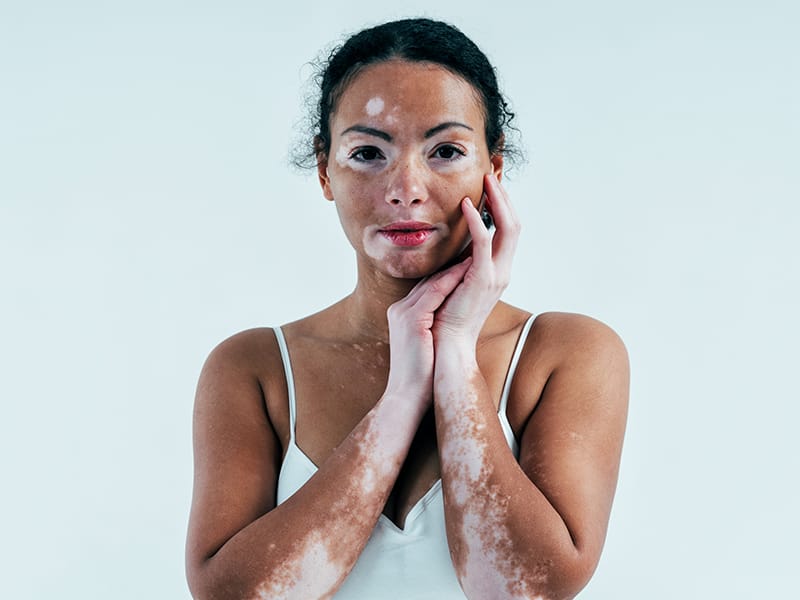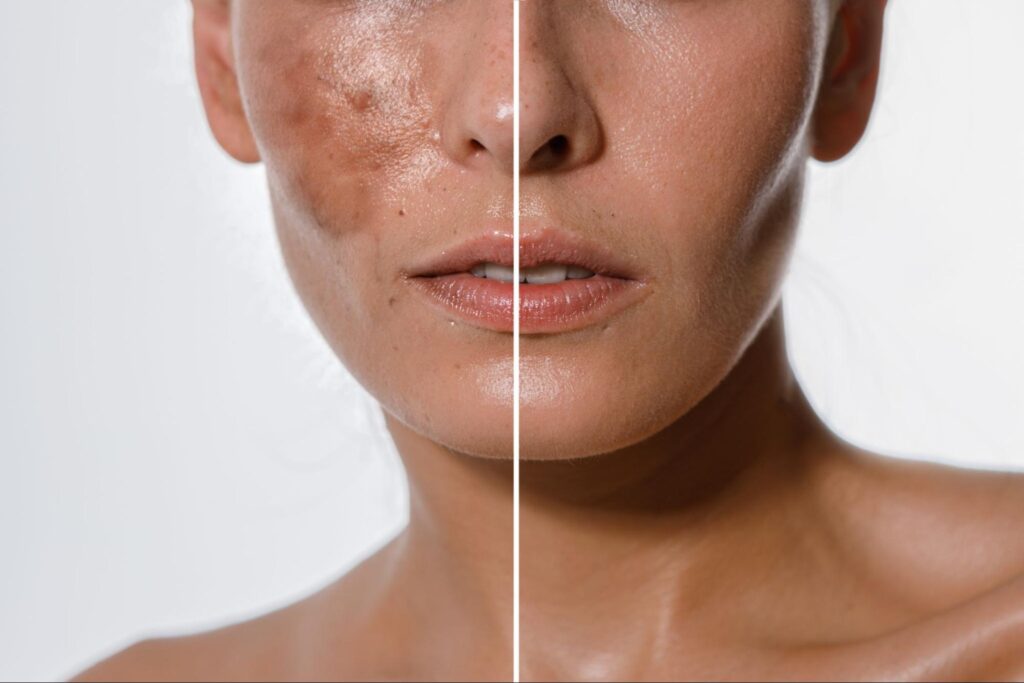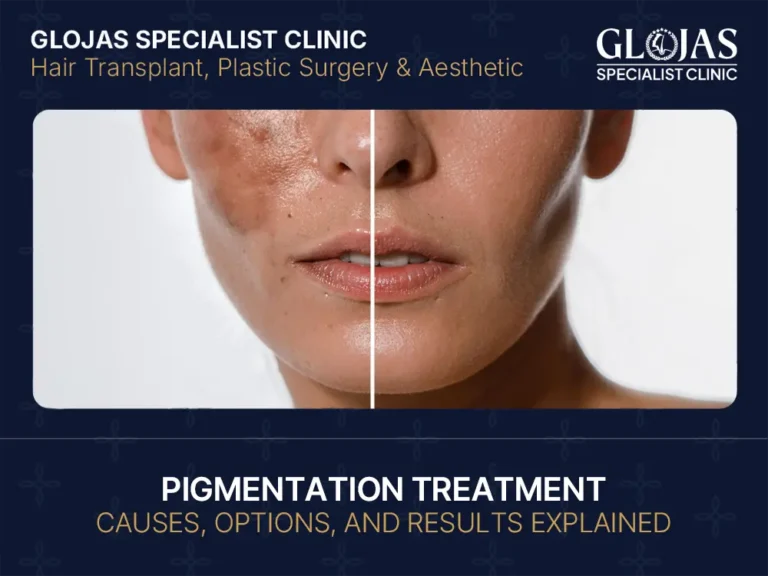Pigmentation is a common skin concern affecting all ages and skin types. It occurs when melanin—the pigment that gives skin its color—is produced unevenly, leading to melasma, freckles, sun spots, or post-inflammatory hyperpigmentation (PIH).
The American Academy of Dermatology (2023) reports that hyperpigmentation is among the top five reasons people seek dermatology care worldwide. Today, safe and effective treatments are available, from topical creams to advanced laser procedures, helping restore clear, even-toned skin.
What Is Pigmentation Treatment?

Pigmentation treatment includes medical and cosmetic procedures that reduce uneven skin tone caused by excess melanin. These treatments target melasma, freckles, sun damage, age spots, and post-inflammatory hyperpigmentation (PIH).
Common options include:
Topical creams (hydroquinone, retinoids, vitamin C)
Chemical peels to exfoliate pigmented layers
Laser treatments like Pico Laser or Q-switched Nd:YAG
Microdermabrasion or fractional CO₂ laser resurfacing
Medical-grade skincare for long-term results
Each method works differently, and the right choice depends on the type and severity of pigmentation.
Common Causes of Pigmentation
Understanding the root cause of pigmentation is key to finding the right treatment. Common triggers include:
Sun exposure – UV rays overstimulate melanin, causing sun spots.
Hormonal changes – Often seen in women, leading to melasma.
Genetics – Freckles and birthmarks are commonly inherited.
Inflammation – Acne or injury can leave post-inflammatory hyperpigmentation (PIH).
Aging – Age spots form as the skin’s melanin regulation weakens.
📊 Journal of Dermatology (2021) reports that over 40% of Asian women aged 30–50 develop melasma or sun-induced pigmentation, making it highly prevalent in Malaysia and across Asia.
Types of Pigmentation

Different types of pigmentation require specific treatments:
Melasma – Brown patches on the cheeks, forehead, or upper lip, often hormone-related.
Freckles – Small, flat brown spots that are genetic but worsen with sun exposure.
Age Spots (Lentigines) – Dark patches linked to aging and long-term sun damage.
PIH (Post-Inflammatory Hyperpigmentation) – Dark marks left behind after acne or skin injury.
For best results, consult a dermatologist or an LCP-certified aesthetic doctor to diagnose your pigmentation type and recommend the most effective treatment.
Best Pigmentation Treatment Options In Malaysia
1. Topical Treatments
Hydroquinone: Gold-standard depigmenting agent, often prescribed in Malaysia.
Retinoids (Tretinoin): Increase cell turnover to fade dark spots.
Vitamin C & Kojic Acid: Antioxidants that brighten skin and reduce melanin activity.
2. Chemical Peels
Uses glycolic acid, salicylic acid, or trichloroacetic acid (TCA) to exfoliate pigmented layers.
Best for mild melasma and PIH.
Requires multiple sessions.
3. Laser Treatments
Pico Laser: Breaks melanin into tiny particles cleared by the immune system.
Q-switched Nd:YAG Laser: Targets deeper pigmentation and melasma.
Fractional CO₂ Laser: Improves texture and pigmentation simultaneously.
Lasers are highly effective for stubborn pigmentation but must be performed by MOH-licensed clinics for safety.
4. Microdermabrasion & Dermabrasion
Mechanical exfoliation of pigmented skin layers.
Effective for mild pigmentation and improving overall skin tone.
5. Long-Term Skincare & Maintenance
Broad-spectrum sunscreen (SPF 30+) daily to prevent recurrence.
Medical-grade serums with niacinamide, tranexamic acid, or peptides.
Lifestyle changes: avoiding prolonged sun exposure and using hats or protective clothing.
What Results Can You Expect?
Topical treatments: Visible improvement in 8–12 weeks.
Chemical peels: Brighter skin after 2–3 sessions.
Laser treatments: Significant reduction in pigmentation after 3–6 sessions.
Maintenance care: Prevents recurrence and preserves results.
Risks and Safety of Pigmentation Treatment
While pigmentation treatments are generally safe when performed by professionals, some temporary side effects may occur, such as:
Redness or irritation
Dryness or peeling (common with chemical peels or retinoids)
Temporary darkening (PIH flare-up) before gradual fading
Rare risks like scarring or infection with aggressive procedures
👉 Always choose an LCP-certified dermatologist or aesthetic doctor at an MOH-approved clinic to ensure safety and minimize risks.
Cost of Pigmentation Treatment in Malaysia
Costs vary by treatment type, number of sessions, and clinic reputation:
Topical creams: RM150 – RM500 per month
Chemical peels: RM300 – RM800 per session
Laser treatments: RM800 – RM2,500 per session
Full treatment packages: RM3,000 – RM8,000+
Malaysia remains more affordable than Singapore or Western countries, making it a preferred destination for medical tourism in pigmentation treatments.
Prevention and Long-Term Care
Apply broad-spectrum sunscreen daily.
Avoid peak UV exposure hours (10am–4pm).
Use medical-grade skincare with antioxidants and brightening agents.
Schedule regular follow-ups with your doctor.
Pigmentation is a chronic condition for many, but consistent treatment and lifestyle management can keep it under control.
Frequently Asked Questions (FAQs)
1. What is the most effective treatment for pigmentation?
Laser treatments, such as Pico Laser and Q-switched Nd:YAG, are highly effective for stubborn pigmentation, especially when combined with topical therapy.
2. How long does pigmentation treatment take to work?
Topical creams may take 8–12 weeks, while chemical peels and laser treatments show results within 2–6 sessions, depending on severity.
3. Is pigmentation treatment permanent?
Results are long-lasting, but pigmentation can return with sun exposure or hormonal triggers. Maintenance and sun protection are essential.
4. Is pigmentation treatment safe for Asian skin?
Yes. Treatments like Pico Laser and chemical peels are safe when performed by experienced doctors familiar with Asian skin types.
5. How much does pigmentation treatment cost in Malaysia?
Costs range from RM150 for creams to RM2,500 per laser session, depending on the type of treatment and clinic expertise.
Conclusion
Pigmentation treatment has advanced significantly, offering safe and effective solutions for melasma, freckles, sun spots, and PIH. From topical creams and chemical peels to advanced laser treatments, patients in Malaysia have access to internationally recognized care at affordable rates.
With proper diagnosis, treatment planning, and long-term skin maintenance, pigmentation can be successfully managed, giving patients a brighter, clearer, and more confident complexion.
